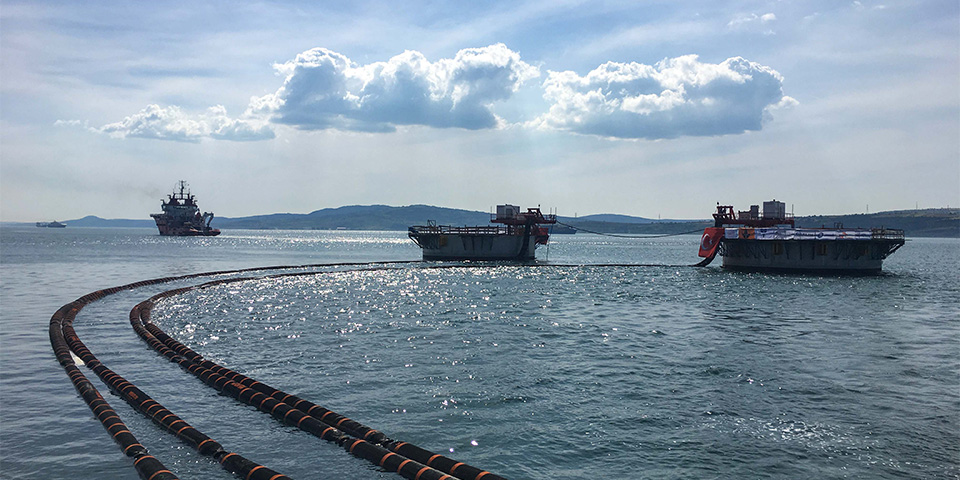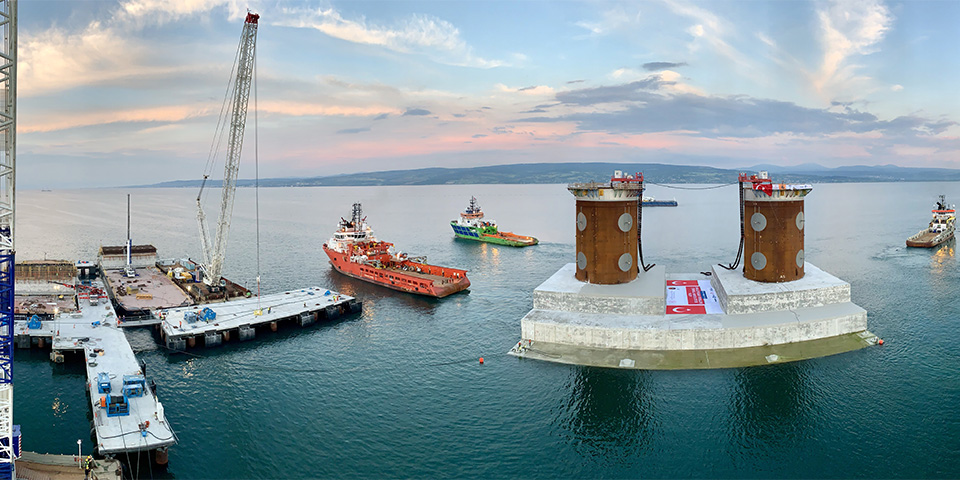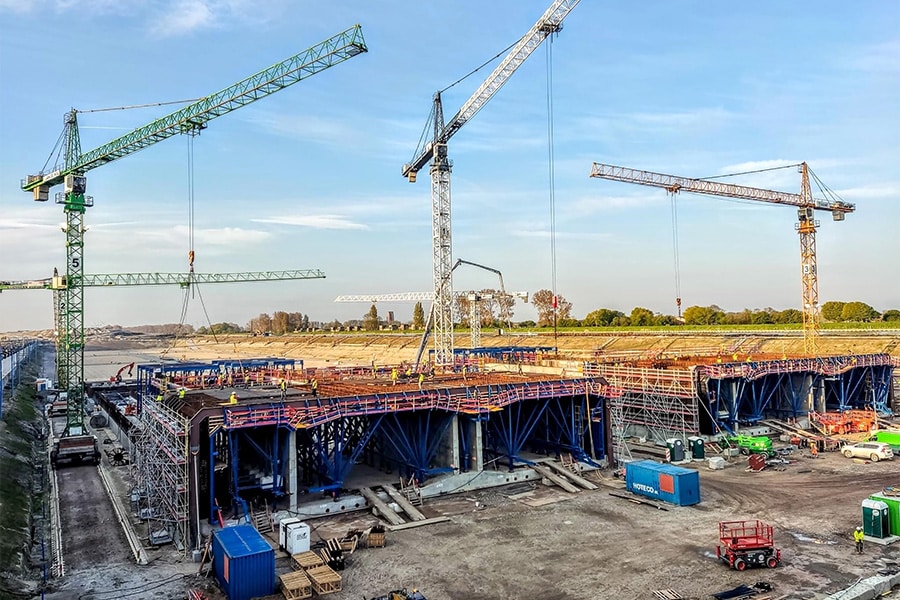
Precision work at the bottom of the Dardanelles
You have previously read in this magazine about the construction of the Çanakkale 1915 Bridge in Turkey. A bridge of phenomenal proportions, part of the Çanakkale-Tekirdağ-Kınalı-Balıkesir highway project. When completed, this suspension bridge over the Dardanelles will replace a number of ferries and connect the cities of Gallipoli on the peninsula of the same name in Europe and Lapseki in Anatolia, Asia. Both towns are located in Çanakkale province.
Construction began in March 2017 and is scheduled for completion in 2023. The total length of the bridge will then be 3,563 meters, with a navigation height of 69 meters. The main span between the two pylons will then be 2,023 meters. The joint venture responsible for the creation of this masterpiece consists of two Turkish and two Korean companies, which in turn engaged Dutch company Strukton Immersion Projects to literally lay the foundation for the structure, the foundation.
Expertise on the square millimeter required
The work is now over for Strukton Immersion Projects. Peter van Westendorp, director of operations at Strukton Immersion Projects, can look back on the work with satisfaction. We speak with him about the challenges Strukton faced. "We were brought to this project by main contractor Dealim, who already knew us from a project in South Korea. After the call for tenders, we won the tender and had to move quickly, in connection with the components to be poured in for the floors. Even though the plan was largely executed as conceived, a lot of fine-tuning was still done in the design process based on new insights," Van Westendrop opens the conversation. "The client had provided an additional challenge by demanding in the final phase of the tendering process that the caissons be positioned much more precisely than initially conceived."
Strukton made a plan for it and went on two tracks in making the floor. Van Westendorp: "Are we going to make the jacking system in the guide structure, or do we incorporate the jacks on or in the caisson? We kept these options open until the very last moment, by having both steel plates cast into the floor as well as anchors in the nose of the caissons. It eventually became option two, in addition to applying the guide structure.

Four tugs to position the caisson.
Dynamic Positioning
Strukton had a number of additional piles placed next to the caissons, for the guide structure. "This is how we optimized the situation. For each position we worked with one pile with one conductor structure. In the original plan, we were to use four tugs anchored to prelayd anchors to pull the caissons into position. On the south side of the caissons, however, there was an extensive cable raceway that prevented anchoring. There we opted for Dynamic Positioning (DP), the tugs were held in position there by GPS measurements. Mind you, with a refinement of 20 cm!" said Van Westendorp.
The precision work was in the last centimeters of lowering, which is why the guidance system was indispensable. "Otherwise you could never achieve secure positioning with the current," Van Westendorp outlines. "The sinking was done using a ballast vessel positioned on DP next to the caisson, with two floating pipes. That meant hours of pumping before the caissons made enough water to sink. The conductor structure formed an L next to the caissons. When they reached 2 meters above the bottom, the caissons were moved toward the guide structure with the help of the tugs. Upon contact with the guide structure, they were fixed in the corner. At 75 cm from the bottom, the jacks were deployed and the caissons were expressed to the correct position. The inclination of the shafts played a big role, after all we are talking about 45 meters depth. We can proudly say that we succeeded in placing both caissons on the target with an accuracy of 10 mm."

On the way to the bottom.
The foundation has been laid
The control of ballast and deballast to independently fill and empty the 29 cluster compartments of the caissons was developed specifically for this occasion. "Each of the two shafts was equipped with a manifold container with a valve system and pumps. Once at the bottom, everything was finally filled and the shafts were cleared of equipment. The final operation was the filling of the shafts themselves. Divers then removed the jacks and guide structures. Last May we were finished and it was possible to proceed with the installation of the inner and outer walls of the shafts, to be filled with concrete. At the end of last month, the connection could be made between the two shafts by means of a prefabricated beam, the basis for the pylons," Van Westendorp says in conclusion.




